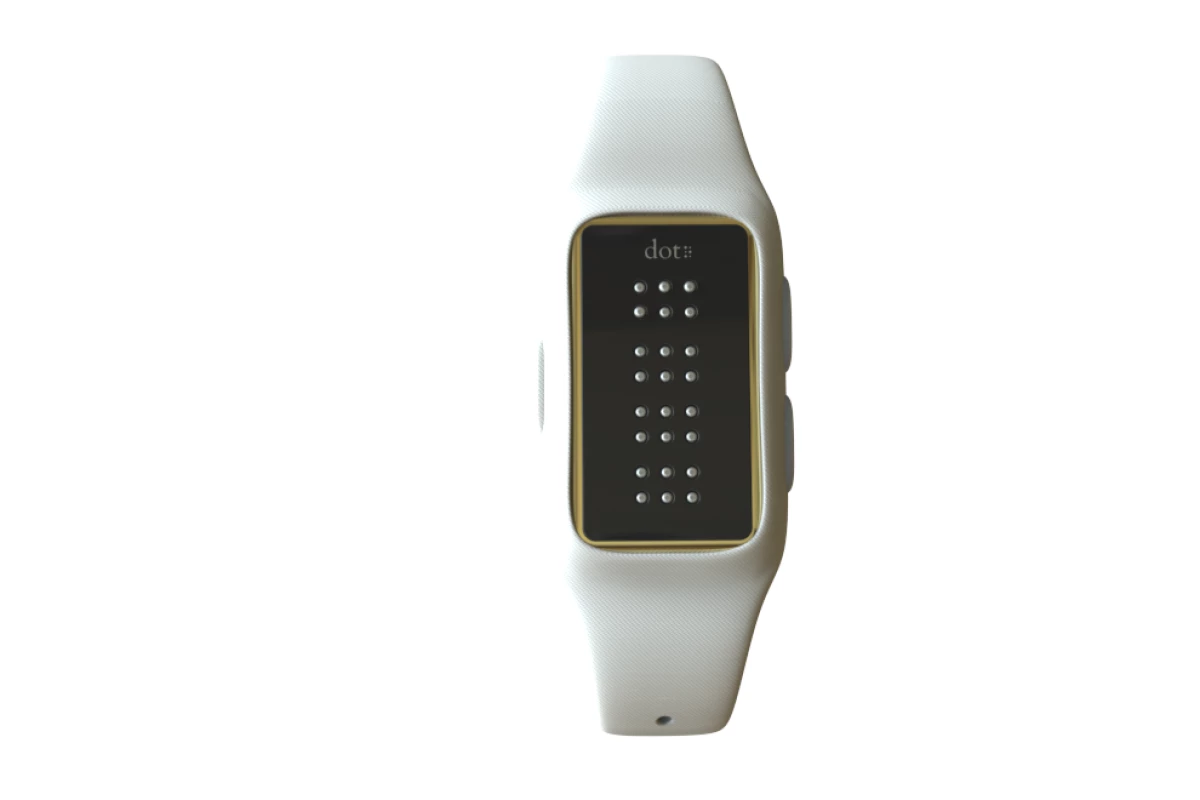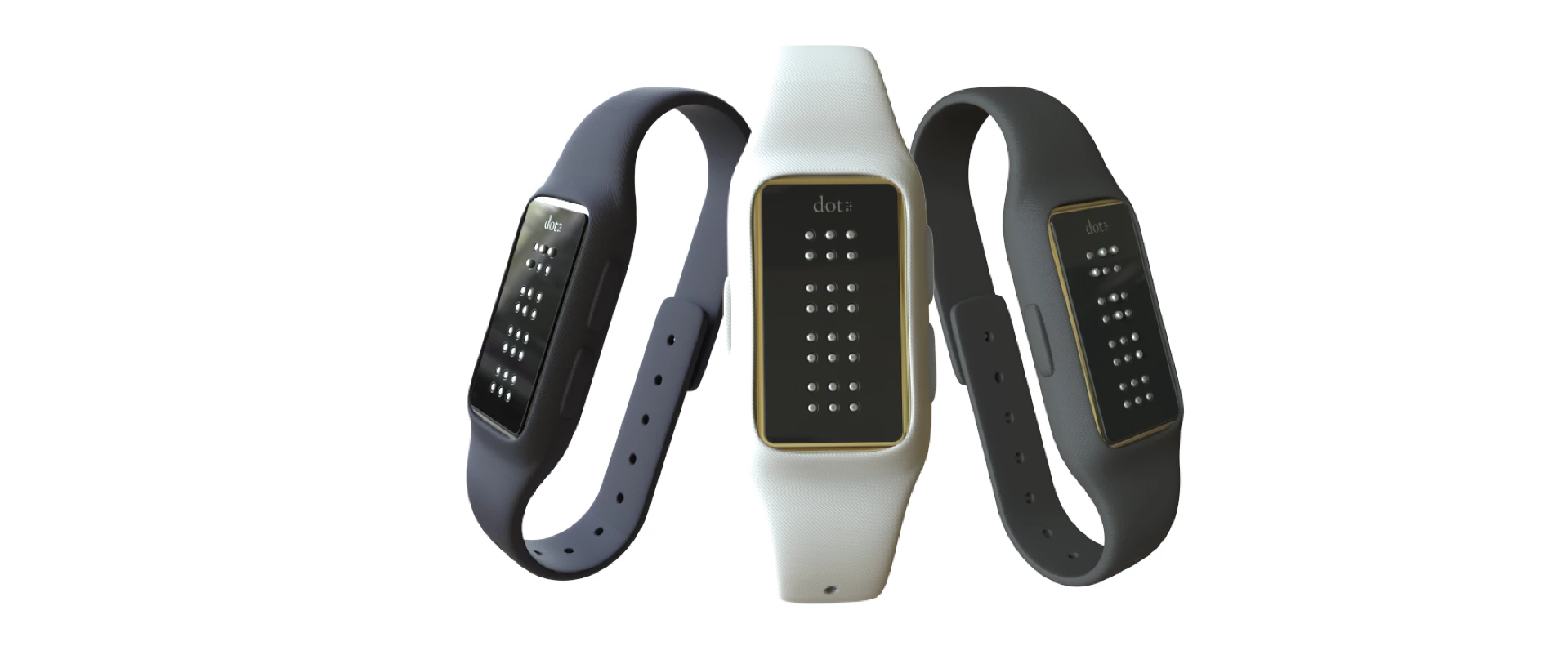ASouth Korean startup has created an active Braille smartwatch for the visuallyimpaired that can be read by touch. Aptly named Dot, the wearable relays the time with a set of pins that rise andfall. Users will be able to receive and read textmessages in real time, read e-books and even learn Braille.
Whenit comes to watches for the visually impaired, there’s not a lot on offer (though we did look at one that uses magnetic ballbearings to indicate time). There aren’t many devices that use real-time Braille text – and the ones that do typically cost thousands of dollars.
Dot,its creators claim, is the first affordable smartwatch for the visuallychallenged that uses haptic technology. Twenty four active pinson its surface, spread across four cells, allow it to display four Braillecharacters at a time. The smartwatch lets users read information in real-timeby linking to any of their Bluetooth-enabled devices.
Forinstance, when a user receives a text message on their mobile phone, an app translates it into Braille and sends it to the smartwatch viaBluetooth. Dot’s internal vibrator motor alerts the user to the message ornotification and the display automatically shifts from telling time to displayingthe notification. Pins corresponding to the pattern protrude from Dot’s surface, allowing users to read the information with their fingertips. Their readingspeed, the company says, is customizable.
"You can adjust the speed of the Braille output throughthe dials on the side of the watch," Daniel Koh, Head of Media Relations atFingerson, tells Gizmag. "With four cells, there’s a limit to the number ofwords being displayed at a time. However, unlike modern refreshable braille displays,which read one line at a time, the 'active braille display' is utilized to makebraille automatically pass by in the user’s hand as if it were an escalator."
Sincereading long paragraphs on a four-cell Braille device might get tedious, Dotplans to create a Braille Pad next that’s more suited to reading ebooks.
Apart from relaying information, the smartwatch can also help users learn Braille witha sound-Braille sync function. For instance, if an app on a mobile device readsout the letter "p," Dot will display the same letter in Braille. Koh says thatthey plan to expand this feature and add more functionality to offer a comprehensivelearning experience.
Thecompany’s founders also have plans to create a public module that integratesthe core Braille technology into machines like ATM’s and information kiosks at transitstations and public places. For instance, a module installed on a train couldlet visually challenged users know which station they’re currently at. A publicmodule installed at a government building might tell blind visitors where roomsare located and how to navigate to the right one. The overall aim is to helppeople living with vision impairment achieve higher levels of independence.
"Only5 percent of blind people worldwide have the privilege [of] devices with refreshablebraille displays because of issues involving the technology and price," says Koh. "With our technology we want to try and reduce the invisiblediscrimination against blind people in information accessibility."
Thecompany plans to manufacture 3,000 Dot’s by December and launch it in the UnitedStates initially for a price below US$300. They’re currently working withvarious distributors to make it available globally.
Source: Fingerson







